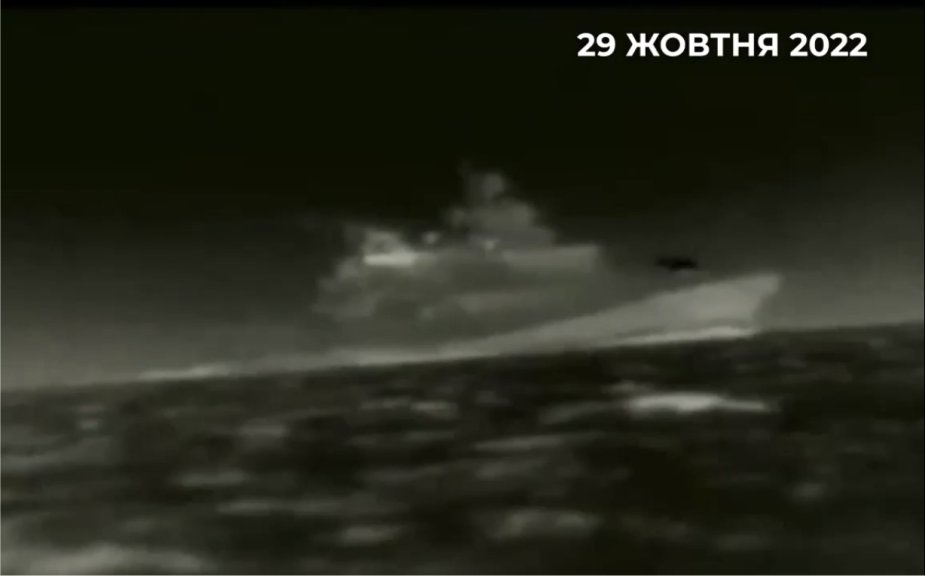According to information published by Военный Осведомитель on October 31, 2022, a video was captured of a Ukrainian Unmanned Surface Vehicle (USV) attacking Black Sea Fleet ships in Sevastopol Bay. The footage shows the attack on the Project 11356R frigate Admiral Makarov, which is the de facto flagship of the fleet after the sinking of the missile cruiser Moskva.
Follow Navy Recognition on Google News at this link
 Footage captured by a Ukrainian USV of a Russian ship in Sevastopol Bay. (Picture source: Военный Осведомитель)
Footage captured by a Ukrainian USV of a Russian ship in Sevastopol Bay. (Picture source: Военный Осведомитель)
Ukrainian's attack on Sevastopol involved nine UAVs and seven autonomous maritime drones, the Russian Defence Ministry has said. The Black Sea Fleet destroyed four maritime drones while repelling the attack on Sevastopol's outer roadstead, while another three drones were destroyed on the inner roadstead.
The Ivan Golubets minesweeper and the containment boom in Yuzhnaya Bay sustained minor damage. The attacked ships are involved in ensuring the security of the "grain corridor" as part of the export of agricultural products from Ukrainian ports, the Russian Defence Ministry added.
Admiral Makarov is an Admiral Grigorovich-class frigate of the Russian Navy, part of the Black Sea Fleet based at Sevastopol. She was laid down at the Yantar Shipyard in February 2012 and commissioned on 25 December 2017. She is the most recently built of her class, and the third of six ships that had been planned in the class as of November 2014.
The Admiral Grigorovich-class also referred to as Krivak V class, Russian designation Project 11356R, is a class of frigates built by the Yantar Shipyard in Kaliningrad for the Russian Navy and Indian Navy, with a cost of $450-500 million.
About the Natya-class minesweeper
The Natya class, Soviet designation Project 266M Akvamarin, were a group of minesweepers built for the Soviet Navy and export customers during the 1970s and 1980s. The ships were used for ocean minesweeping.
The design evolved from the Yurka-class minesweeper with new demining equipment including more advanced sonar and closed circuit TV. A stern ramp made recovering sweeps easier.
The hull was built of low-magnetic steel. The engines were mounted on sound-dampening beams and shrouded propellers were used to reduce noise. An electrical field compensator was also installed. A single ship designated Natya 2 by NATO was built with an aluminum hull for reduced magnetic signature.
About the USV
This USV looks like a "kamikaze" type with a detonating warhead. It is a semi-submersible drone and its task is to stealthily approach the target with subsequent detonation. It is most likely controlled both manually using onboard TV cameras and via a satellite channel.



